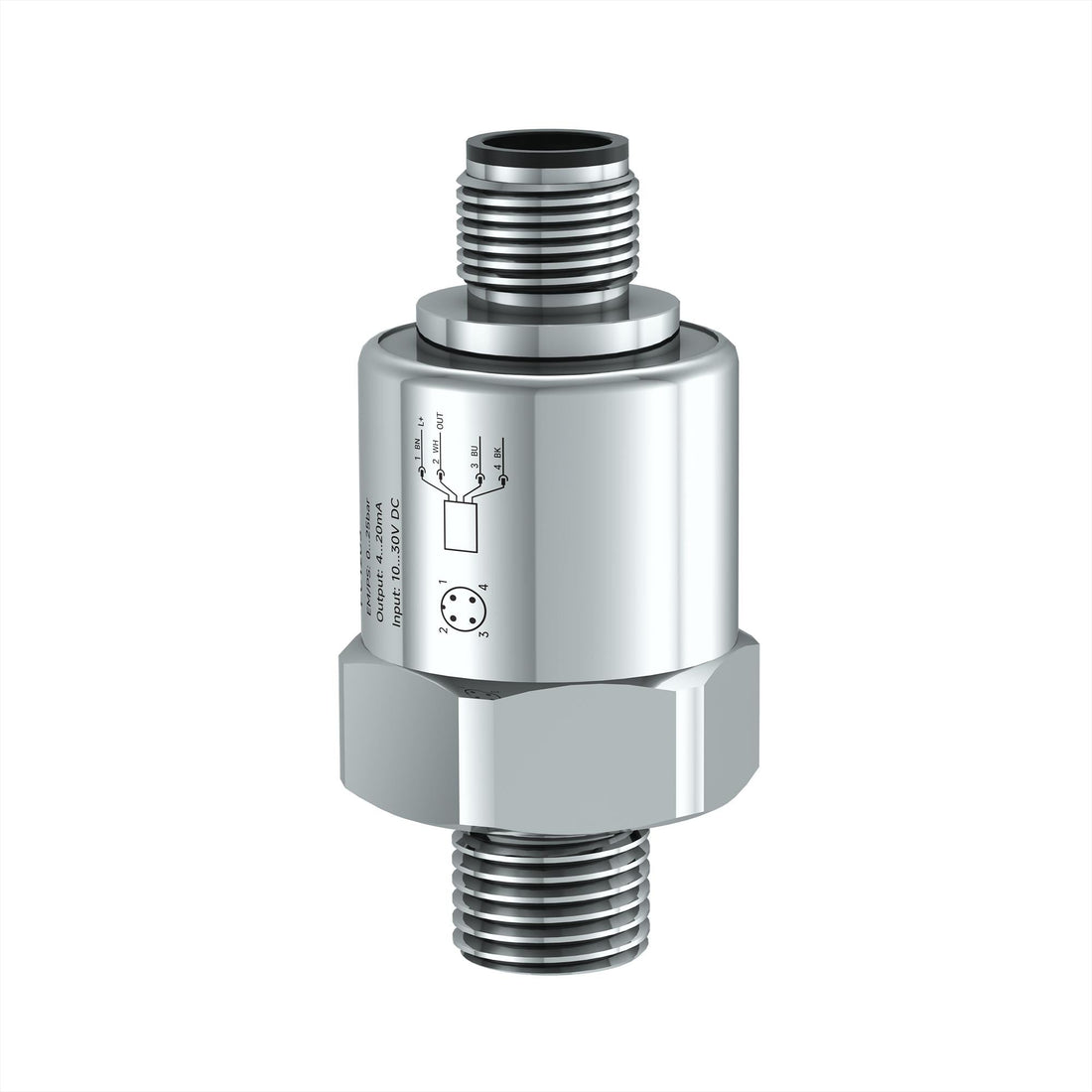
Stainless Steel Solenoid Valve: 8 Jaw-Dropping Reasons SKE Equipment Reigns Supreme
Share
A stainless steel solenoid valve is more than just a tiny part in your system—it’s the unsung hero ensuring reliable flow control in breweries, pharmaceutical plants, and food processing lines. When you choose a high-quality stainless steel solenoid valve from SKE Equipment, you’re not just installing a valve—you’re upgrading to precision, durability, and peace of mind. In this comprehensive guide, we’ll explore:
-
The anatomy and operation of a stainless steel solenoid valve
-
Why material choice matters for longevity and hygiene
-
Key advantages of stainless steel solenoid valve designs
-
Installation and commissioning best practices
-
Operating tips and maintenance for a flawless stainless steel solenoid valve
-
Common customer questions answered about stainless steel solenoid valve selection
By the end, you’ll understand why a top-tier stainless steel solenoid valve from SKE Equipment is essential for keeping your processes running smoothly and safely.
1. Anatomy & Operation of a Stainless Steel Solenoid Valve
A stainless steel solenoid valve might look simple, but under the hood, it’s a finely tuned mechanical and electrical device. Here’s what you’ll find inside:
-
Stainless Steel Body: The robust housing resists corrosion, handles high pressures, and meets strict hygiene requirements. At SKE Equipment, each stainless steel solenoid valve uses 316L stainless for maximum chemical and temperature resistance.
-
Electric Coil & Plunger: When you apply voltage, the coil creates a magnetic field, pulling up the plunger. In a stainless steel solenoid valve, this movement opens or closes the flow path—either directly or via a pilot mechanism for high-pressure systems.
-
Valve Seat & Seal: The sealing surface—often FKM, EPDM, or PTFE—sits against the plunger to stop flow. SKE Equipment’s stainless steel solenoid valve seats use food-grade PTFE, ensuring zero leaching and reliable sealing, even under harsh conditions.
-
Orifice & Flow Path: The size and geometry of the orifice determine flow rate (Cv value). In a stainless steel solenoid valve, precise machining ensures consistent flow, minimal turbulence, and rapid response (15–20 ms opening time).
-
Enclosure & IP Rating: Outdoor or washdown applications require IP65 or higher. SKE Equipment’s stainless steel solenoid valve enclosures are epoxy-coated on electrical components, keeping moisture and dust at bay.
Understanding these parts helps you appreciate why a high-quality stainless steel solenoid valve from SKE Equipment delivers unmatched reliability, especially in demanding sanitary or corrosive environments.
2. Why Material Choice Matters: The Stainless Steel Advantage
When selecting a solenoid valve, material makes a drastic difference. Here’s why a stainless steel solenoid valve outperforms alternatives:
-
Corrosion Resistance
-
Harsh media—acidic cleaners, wort, or saline solutions—can corrode brass or zinc alloys. A stainless steel solenoid valve resists pitting and rust. SKE Equipment specifies 316L stainless, which contains molybdenum, offering superior resistance in chemical and beverage applications.
-
-
Sanitary Compliance
-
Food, beverage, and pharmaceutical processes can’t tolerate crevices or corrosion. SKE Equipment’s stainless steel solenoid valve ports and seats meet 3A and FDA standards. Polished internals minimize biofilm formation and adhere to strict sanitation protocols.
-
-
Temperature Range
-
PTFE seats in a stainless steel solenoid valve handle up to 200 °C, while EPDM or FKM seats handle sub-zero to 150 °C. This broad range ensures compatibility with hot CIP cycles, steam sterilization, or cold storage without embrittlement or leaking.
-
-
Durability & Longevity
-
Brass or plastic valves might crack or wear out quickly under repeated thermal cycles. A stainless steel solenoid valve withstands 500 000+ cycles with minimal wear, thanks to hardened springs and precision-machined pintles. SKE Equipment guarantees cycle life testing for every valve.
-
-
Pressure Handling
-
In high-pressure systems—up to 16 bar (232 psi) or more—a stainless steel solenoid valve remains stable. SKE Equipment’s valves are rated to 20 bar at ambient temperature, making them ideal for hydraulic, steam, or compressed air lines where lower-grade valves might fail.
-

3. Key Advantages of a Stainless Steel Solenoid Valve from SKE Equipment
Now that you understand the basics, let’s dive into eight reasons customers choose SKE Equipment’s stainless steel solenoid valves time and again:
-
Engineered for “Clean-In-Place” Cycles
A stainless steel solenoid valve must survive high-temperature caustic washes. SKE Equipment’s designs use PTFE seals rated to 200 °C and IP67-rated coils, ensuring valves operate flawlessly after daily CIP cycles. -
Ultra-Fast Response Times
For applications like dosing or pneumatic control, every millisecond counts. A precision stainless steel solenoid valve from SKE Equipment opens in 15 ms and closes in 20 ms. This speed ensures accurate batch-to-batch consistency, whether controlling hop extract addition or fluid-level sensing. -
Minimal Internal Cavities
3A sanitary compliance demands no dead legs where bacteria can hide. SKE Equipment’s stainless steel solenoid valve bodies are polished to Ra ≤ 0.4 µm, and the internal cavity design avoids pockets. This reduces cleaning time and microbial risk, giving you peace of mind. -
Custom Configurations & Actuation Options
Need a direct-acting 2-way valve? Or perhaps a pilot-operated 3-way design for high-flow requirements? SKE Equipment offers configurations—2/2 NC, 2/2 NO, 3/2, even multi-port rotary options—so your stainless steel solenoid valve fits the exact role without compromise. -
Wide Voltage & Power Choices
Whether you need a 24 VDC coil for control panels or a 110 VAC coil for standard power outlets, SKE Equipment stocks all popular voltages. Their stainless steel solenoid valve coils are UL/CSA-rated, with inrush suppression to prevent voltage spikes. -
Rigorous Testing & Certification
Every stainless steel solenoid valve undergoes 100% testing: leak testing at 1.2× pressure rating, cycle testing to 500 000 actuations, and electrical endurance testing for 200 000 cycles. When the valve ships, you have a certificate of conformity and ETL listing for North American markets. -
Low Power Consumption
Energizing a solenoid coil draws current, which can add up across dozens of valves. SKE Equipment’s stainless steel solenoid valve coils use a latching design or efficient Class H insulation, reducing power draw by 30% compared to standard coils—saving energy costs over time. -
Global Support & Spare Parts Availability
With distributors in Europe, North America, and Asia, SKE Equipment ensures spare stainless steel solenoid valve parts are on-hand in 48 hours. Whether it’s O-rings, springs, or seals, you can get back online fast if replacement is needed.
4. Installing & Commissioning Your Stainless Steel Solenoid Valve
A properly installed stainless steel solenoid valve performs reliably for years. Follow these steps:
4.1 Unpacking & Inspection
-
Check for Damage: Examine the valve body, coil, and connectors. SKE Equipment inspects every stainless steel solenoid valve before shipping, but damage can occur in transit.
-
Verify Model & Specifications: Confirm coil voltage, port size (1/4″, 1/2″, 3/4″ NPT or BSP), and seal material (PTFE, FKM, or EPDM) match your system requirements.
4.2 Mounting & Orientation
-
Flow Direction: All stainless steel solenoid valves have a flow arrow cast on the body. Install with flow in the correct direction to avoid internal damage.
-
Avoid Vibration Hot Spots: Mount the valve on solid piping, not on flexible hoses, to prevent fatigue. For outdoor or high-vibration areas, use vibration dampers to protect the stainless steel solenoid valve coil and internals.
4.3 Electrical Hookup
-
Power Off: Always disconnect power before wiring a stainless steel solenoid valve.
-
Polarity & Connections: For DC coils, observe correct polarity. SKE Equipment marks positive and negative clearly. Use crimped and heat-shrunk terminals to avoid loose connections.
-
Surge Suppression: Install a diode (for DC) or an RC snubber (for AC) across coil leads to prevent voltage spikes from coil collapse, which can damage the stainless steel solenoid valve coil over time.
4.4 Leak & Electrical Testing
-
Air or Water Leak Test: Pressurize the system to 1.2× the valve’s rated pressure (e.g., 12 bar for a 10 bar valve). Inspect all seals and connections for drips.
-
Power Activation: Energize the coil and listen for the “snap” of the stainless steel solenoid valve opening. Confirm that the valve operates reliably under system pressure. Check coil heating: it should remain within specified temperature limits (e.g., < 70 °C).

5. Operating & Maintaining Your Stainless Steel Solenoid Valve
Regular maintenance keeps a stainless steel solenoid valve performing at peak efficiency:
5.1 Daily Pre-Run Checks
-
Visual Inspection: Look for leaks, corrosion, or unusual coil heating. A minor drip can escalate quickly.
-
Operational Sound: Listen for consistent actuation clicks. A “sluggish” sound may indicate internal contamination or low voltage to the coil.
5.2 Periodic Cleaning & Inspection
-
Monthly Cleaning: Depressurize and remove the valve. Disassemble to clean the plunger and seat with a soft brush and approved solvent. Reassemble with new O-rings if any show wear. For critical applications, sanitize with steam or CIP solution.
-
Quarterly Full Inspection: Replace seals and springs proactively. Springs can weaken with extended use, affecting response times. Inspect the coil insulation for cracks or discoloration. Replace any coil that shows signs of degradation to maintain a safe stainless steel solenoid valve.
5.3 Troubleshooting Common Issues
-
Valve Won’t Open or Close: Check coil voltage at the coil’s terminals. If coil voltage is correct, disassemble the valve to clean or replace a stuck plunger.
-
Continuous Dripping: A worn seat or damaged seal is usually the culprit. Replace seat seals with SKE Equipment OEM parts designed for your specific model.
-
Humming or Buzzing Coil: High voltage or AC coil resonance can cause noise. Verify correct coil type and voltage rating. Installing an RC snubber or diode (for DC) often remedies the issue.

6. Customer FAQs: Stainless Steel Solenoid Valve Insights
Q1: How do I choose between 2-way and 3-way stainless steel solenoid valves?
A1: A 2-way stainless steel solenoid valve simply opens or closes a single flow path—ideal for on/off control in water or gas lines. A 3-way valve has three ports, allowing diversion between two outlets or mixing two inlets. Choose a 3-way stainless steel solenoid valve if you need to alternate between two lines or blend fluids.
Q2: What voltage options are available for stainless steel solenoid valves?
A2: SKE Equipment offers coils in 12 VDC, 24 VDC, 110 VAC, and 230 VAC. DC coils require correct polarity; AC coils need no polarity but should be protected by an RC snubber to extend coil life. Always match voltage and frequency (50/60 Hz) exactly as marked on the stainless steel solenoid valve.
Q3: Can a stainless steel solenoid valve work in food or pharmaceutical applications?
A3: Absolutely. A stainless steel solenoid valve with 316L body and PTFE seals meets FDA and 3A sanitary standards. SKE Equipment’s valves undergo passivation and polishing (Ra ≤ 0.8 µm) to prevent bacterial growth, making them perfect for clean‐in‐place (CIP) or steam‐in‐place (SIP) cycles.
Q4: How do I prevent scaling or clogging in a stainless steel solenoid valve?
A4: In hard water or fluid streams containing particulates, install a filter or strainer upstream (mesh size < 100 µm). Use SKE Equipment’s strainer assemblies to catch debris before it reaches the stainless steel solenoid valve. Regularly inspect and clean strainers during scheduled maintenance to keep fluid pathways clear.
Q5: What’s the typical service life of a stainless steel solenoid valve?
A5: Under normal conditions and proper maintenance, a stainless steel solenoid valve from SKE Equipment can exceed 500 000 cycles. In corrosive or high‐temperature environments, you may see valve life closer to 200 000 cycles—still significantly longer than brass or plastic alternatives.
Ready to upgrade your process with the ultimate stainless steel solenoid valve from SKE Equipment?
